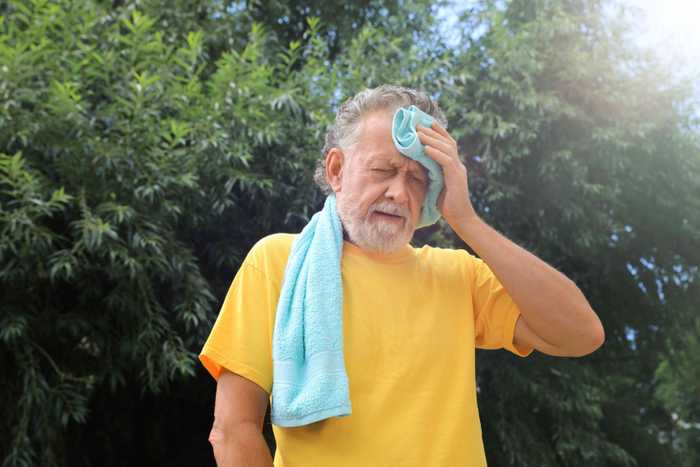Published 20:39 IST, May 22nd 2024
What Is Heatstroke? Understand Its Causes, Symptoms, Risk Factors And Prevention
Heatstroke is a life-threatening condition that can be prevented with proper awareness and precautionary measures.
- Health News
- 2 min read
Heatstroke is a severe heat-related illness that occurs when the body’s temperature regulation system fails, causing the core temperature to rise to dangerous levels, typically above 104°F (40°C). This condition requires immediate medical attention as it can lead to serious complications, including organ damage and death.
Causes of heatstroke
Heatstroke can result from prolonged exposure to high temperatures, especially when combined with high humidity and physical exertion. It often occurs during heatwaves, but can also happen in situations where individuals are working or exercising in hot environments without adequate hydration. The body’s ability to cool itself through sweating becomes overwhelmed, leading to an increase in core temperature.

Symptoms of heatstroke
Early signs of heatstroke include headache, dizziness, and confusion. As the condition progresses, symptoms may worsen and include nausea, vomiting, flushed skin, rapid heartbeat, and rapid, shallow breathing. In severe cases, heatstroke can cause seizures, loss of consciousness, and even coma. Unlike milder heat illnesses like heat exhaustion, heatstroke does not involve sweating, as the body’s mechanisms for cooling down have failed.
Risk factors
Certain groups are more susceptible to heatstroke, including the elderly, young children, and individuals with chronic illnesses such as heart disease or respiratory conditions. Additionally, people taking certain medications that affect the body’s ability to stay hydrated and dissipate heat, such as diuretics or antihistamines, are at higher risk. Athletes and outdoor workers are also particularly vulnerable due to prolonged physical activity in hot conditions.

Prevention strategies
Preventing heatstroke involves several strategies aimed at reducing heat exposure and maintaining adequate hydration. Key preventive measures include:
1. Stay Hydrated: Drinking plenty of fluids is essential, especially water and electrolyte-replenishing beverages. Avoid alcohol and caffeine as they can contribute to dehydration.
2. Dress Appropriately: Wear lightweight, loose-fitting, and light-colored clothing. A wide-brimmed hat and sunglasses can also help protect from the sun.
3. Seek Shade and Cool Environments: During peak heat hours (10 a.m. to 4 p.m.), stay indoors in air-conditioned environments as much as possible. If air conditioning is unavailable, visit public places like malls or libraries.
4. Limit Physical Activity: Avoid strenuous exercise and physical labor during the hottest parts of the day. If exercise is unavoidable, take frequent breaks in a cool or shaded area and drink fluids regularly.
Updated 20:39 IST, May 22nd 2024